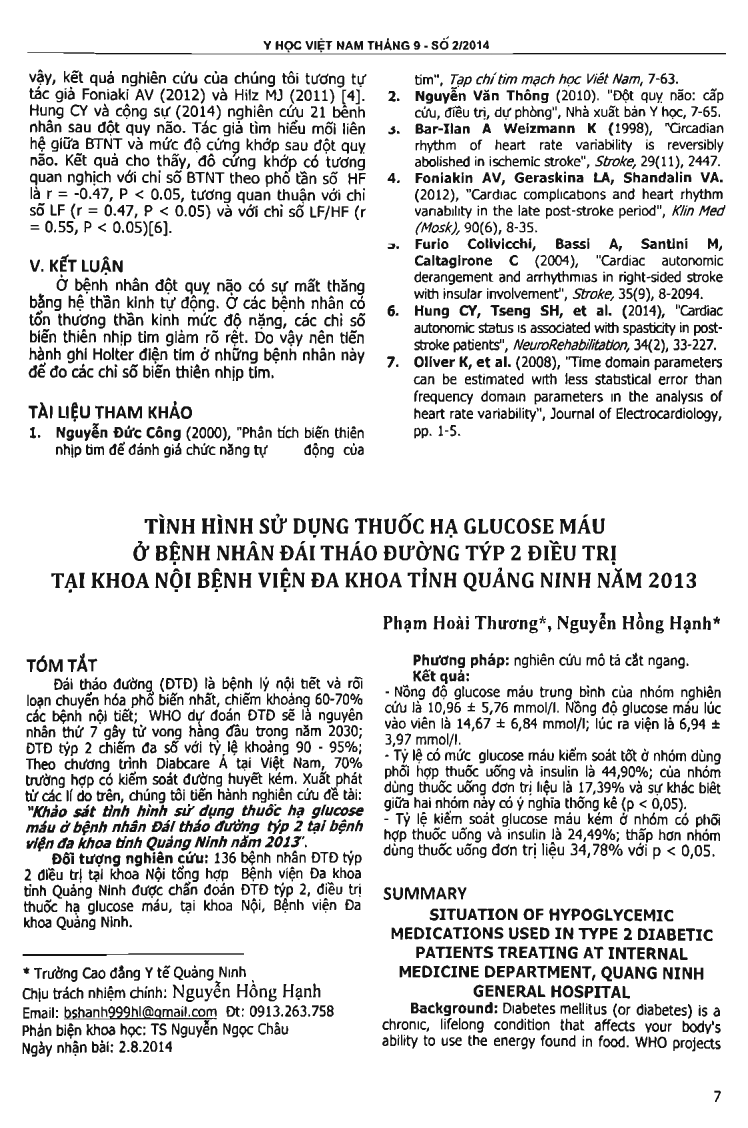
Background: Diabetes mellitus (or diabetes) is a chronic, lifelong condition that affects your body's ability to use the energy found in food. WHO projects that diabetes will be the 7th leadinq cause of death in 2030. Accountinq for 90 to 95 percent of those with diabetes, type 2 is the most common form; According to Diabcare-Asia program in Vietnam, 70 percent cases have bad glycemic control. So the authors study the topic: "Survey the situation of hypoglycemic medications using in type 2 diabetic patients". Subjects: 136 patients who are diagnosed type 2 DM and treated by hypoglycemic medications at Internal Medicine Department, Quang Ninh General Hospital. Method: Crossing discription. Results:- Participants' averaqe blood level was 10.96 + or - 5.76 mmol/l. Admission blood qlucose level was 14.67 + or - 6.84 mmol /l; discharqed with 6.94 + or - 3.97 mmol /l. - The rate of blood qlucose control in qroup usinq combination oral and insulin was 44.90 percent; oral dosinq qroup was 17.39 percent in monotherapy, and the differences between these two groups had statistically significant (p 0.05). - The percentage of poor blood glucose control in group oral medications and insulin coodination is 24.49 percent; lower than the group taking oral monotherapy 34.78 percent with p 0.05.
- Đăng nhập để gửi ý kiến
